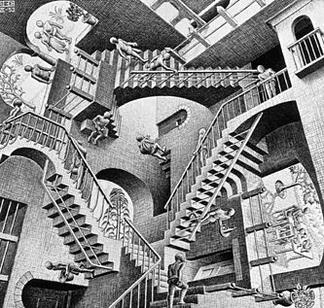Peter Nahum has an excellent editorial in the Art Newspaper titled “How I was duped by the Bolton forgers“. Nahum, the director of the Leicester Galleries in London details the fraud in 1990
[S]he wished to sell a painting by the Scottish Colourist, Samuel John Peploe, which she had inherited from her grandfather who had owned an art gallery. This was confirmed by a label on the reverse: “The Metcalfe Gallery, 45 Dundas Street, Edinburgh”. She arranged for her husband to bring the painting to the gallery after 6pm and stated that she wanted cash… In the middle of that night I woke up and realised it was almost certainly a fake.
In fact he wasn’t duped, as he cancelled the check quickly and reported the incident to the police. It seems the Greenhalgh’s had built quite a reputation for passing forged art, but it wasn’t until 2006 that the Greenhalgh’s were finally raided. The troubling aspect of this case is the fact that these individuals were suspected art forgers, yet the state of the market is such that legitimate works cannot be distinguished from forgeries sold by known art forgers. The clear indication is that there needs to be a radical shift in the way the art market guarantees authenticity and title. Either a centralized database, or some kind of title insuring mechanism is sorely needed to prevent this kind of fraud.
One wonders how often dealers suspect the dubious nature of a work, but because a forgery may be of such a high quality, they reason that members of the public would not suspect. Nahum’s statement on this is quite telling I think:
The point about the Greenhalgh case … is that what seems to be a rock solid provenance can distract the expert’s eye from careful assessment. Every cloud has a silver lining; although I have sometimes lost money tracking down fakers and reporting them, I have gained another arrow in my street-smart quiver. Never trust a provenance until it can be verified. Trust your eye and instinct, your personal researches and any reliable expert on the subject you can consult.
At a minimum, the relevant law enforcement personnel should have circulated the names of the Greenhalgh’s among the dealing community to prevent further fraud. The understaffed Art and Antiques Unit was slow in responding as well it would seem. Another difficulty is the ambiguity which the term “provenance” encompasses. If courts in the UK had a wider sampling of cases with which to grapple, perhaps a firm conception of the term would emerge, however these cases occur relatively infrequently. As such, we are relying on industry practice to define the boundaries of “good provenance” and that has produced a deeply unsatisfying system.
UPDATE:
Jamie Grace, a friend and researcher at the University of Derby emailed me with some very interesting thoughts on this situation:
The sale of a forgery (and the resale of stolen art in general) would cause difficulties for DACS the agency that attempts to administer the Artist’s Resale Rights Regulation 2006. I support your call for an authenticity database – from my perspective, it could be linked to another mandatory database detailing sales, making the administration of the 2006 Regulations for the benefit of contemporary artists a lot easier.
As for the Art & Antiques Unit, restrictions on a researcher’s ‘right to know’ under the Data Protection Act 1998 and the Freedom of Information Act 2000 means that for ‘operational reasons’ the Unit cannot divulge many details about recovered or stolen works or art (or antiques etc.) – so a curious or suspicious art market professional cannot even go straight to the Unit to check provenance. Allowances are hard to make for the reasons of understaffing when the legal framework itself defeats the aims of sensible dealers.
Jamie knows far more about DACS than I do. From what I understand it is essentially a scheme which takes a small portion of the sale of works of art and distributes it among contemporary artists. I hope to hear more from him on that in the coming months here.
I’ll confess I was unaware of the implications of the Data Protection Act and the Freedom of Information Act, but they only seem to be undercutting the work of the Unit in this case.
Questions or Comments? Email me at derek.fincham@gmail.com



